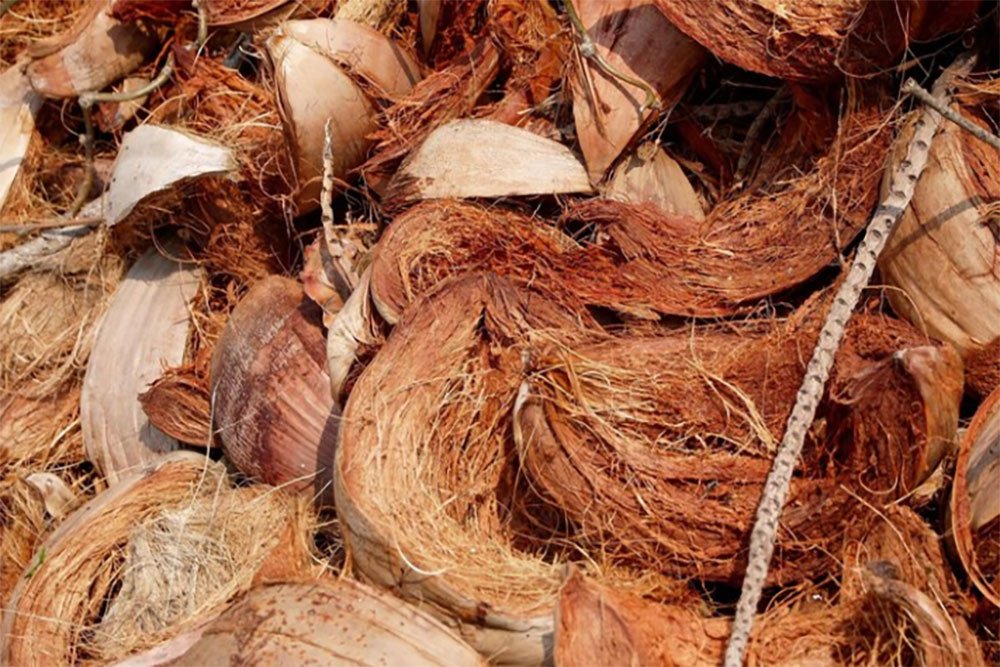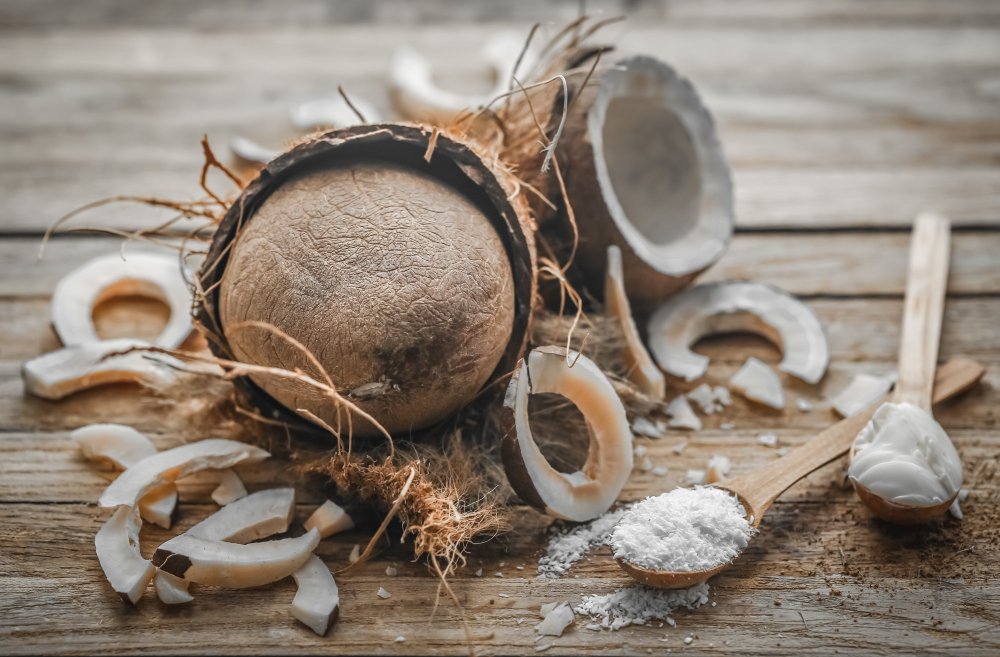The world’s oceans are facing an unprecedented assault from plastic pollution, but the impact of other organic waste, like coconut husk, remains largely understudied. Coconut husks, a byproduct of the thriving coconut industry, often end up in coastal waters, posing potential environmental challenges. Understanding their biodegradation in marine environments is crucial for developing sustainable waste management strategies and protecting our oceans’ health. This article delves into the fascinating world of coconut husk biodegradation, exploring its impact and the potential for innovative solutions.
Unveiling Coconut Husk’s Marine Fate
Coconut husks, composed primarily of lignocellulose, are remarkably resilient. Their tough, fibrous structure resists rapid decomposition, meaning they can persist in marine environments for extended periods. This persistence can lead to several negative consequences. Firstly, the accumulating husks can smother benthic habitats, disrupting sensitive ecosystems and impacting the biodiversity of coastal regions. Secondly, the husks can alter the physical structure of beaches and nearshore environments, affecting wave action and sediment dynamics. Finally, the slow decomposition process can lead to the release of organic matter into the water column, potentially impacting water quality and contributing to eutrophication. Understanding the rate and extent of husk degradation is thus vital for assessing their overall environmental impact.
The journey of a coconut husk in the marine environment is a complex interplay of biological, chemical, and physical factors. Salinity, temperature, and the presence of specific microbial communities all influence the rate of biodegradation. Marine organisms, such as bacteria and fungi, play a crucial role in breaking down the complex lignocellulose structure, but their effectiveness varies depending on environmental conditions. Factors like sunlight exposure and wave action also contribute to the physical breakdown of the husks, increasing the surface area available for microbial colonization and accelerating the decomposition process. Research into these processes is essential for predicting the long-term fate of coconut husks in different coastal settings.
The spatial distribution of coconut husk accumulation varies significantly depending on factors like coastal currents, proximity to coconut processing facilities, and prevailing winds. Dense accumulations are often observed near coastal communities heavily reliant on coconut production. These concentrated areas represent hotspots of potential environmental impact, requiring targeted interventions. Mapping these accumulation zones and understanding the factors driving their formation can inform effective waste management strategies. By combining field observations with advanced modeling techniques, scientists can develop more accurate predictions of coconut husk distribution and inform the design of effective mitigation measures.
The long-term consequences of coconut husk accumulation in marine environments are still being investigated. While the direct impacts on marine life are not as immediately apparent as those of plastic pollution, the potential for habitat disruption, water quality degradation, and alterations to coastal geomorphology cannot be ignored. Continued research is needed to fully understand the cumulative effects of coconut husk accumulation on marine ecosystems and to develop strategies for mitigating these impacts.
Biodegradation: A Coastal Concern?
The slow biodegradation of coconut husks in marine environments presents a significant coastal concern. The accumulation of these husks can lead to a range of ecological problems, impacting the health and biodiversity of coastal ecosystems. The physical presence of the husks can smother seagrass beds and coral reefs, vital habitats for numerous marine species. This can lead to a decline in fish populations and disrupt the delicate balance of these vital ecosystems. Moreover, the slow decomposition process can lead to the release of nutrients into the water column, potentially triggering algal blooms and contributing to oxygen depletion.
The aesthetic impact of coconut husk accumulation on beaches and coastal areas should not be underestimated. Large quantities of husks can detract from the beauty of these environments, impacting tourism and recreational activities. This has significant economic consequences for coastal communities that rely on these industries. Furthermore, the husks can create hazards for beachgoers, posing a tripping risk and potentially hindering access to the water. Addressing the problem of coconut husk accumulation is therefore not just an environmental concern but also an economic and social one.
The potential for coconut husk accumulation to impact coastal infrastructure should also be considered. Large quantities of husks can clog drainage systems, leading to flooding and erosion. They can also interfere with navigation in shallow coastal waters. These impacts can have significant economic consequences, requiring costly cleanup and maintenance efforts. Therefore, effective management strategies are essential to minimize these risks and protect coastal infrastructure.
The issue of coconut husk biodegradation is not simply a matter of aesthetics or minor inconvenience; it represents a significant threat to the health and sustainability of coastal ecosystems. The potential for long-term ecological damage, economic losses, and infrastructure disruption underscores the urgency of developing and implementing effective solutions to manage coconut husk waste. Ignoring this issue would be a significant oversight with potentially devastating consequences for our coastal environments.
Accelerating Nature’s Cleanup Process
While natural biodegradation processes occur, they are often too slow to effectively manage the volume of coconut husks entering marine environments. Accelerating this process through innovative techniques is crucial for mitigating the environmental impact. One promising approach is the use of microbial consortia, specifically engineered to efficiently break down the lignocellulose components of coconut husks. Research into identifying and cultivating these highly effective microbial communities is ongoing, with promising results.
Another strategy involves pre-treatment of coconut husks before disposal. Methods such as composting, anaerobic digestion, or mechanical shredding can significantly increase the surface area of the husks, making them more susceptible to microbial attack and accelerating the decomposition process. These pre-treatment methods can be implemented at coconut processing facilities, reducing the amount of intact husks entering the marine environment. Combined with appropriate disposal methods, this approach can significantly reduce the environmental burden.
The use of bioaugmentation, the introduction of specific microorganisms to enhance biodegradation, is another avenue being explored. This technique involves adding carefully selected microbial communities to the marine environment to boost the rate of coconut husk decomposition. The success of this approach hinges on careful selection of appropriate microorganisms and understanding the specific environmental conditions to ensure their effectiveness. Further research is needed to optimize this method for marine environments.
Ultimately, a multi-pronged approach is likely to be the most effective. This might involve a combination of pre-treatment methods at the source, bioaugmentation techniques in affected areas, and ongoing monitoring to assess the effectiveness of these interventions. A collaborative effort between researchers, industry stakeholders, and policymakers is essential to develop and implement these strategies effectively. The goal is not simply to clean up existing pollution but also to prevent future accumulation.
Sustainable Solutions: The Ocean’s Future
Sustainable waste management practices are crucial for mitigating the impact of coconut husks on marine environments. This requires a shift away from simply disposing of husks in coastal areas towards implementing responsible waste management strategies throughout the entire coconut supply chain. This includes promoting the use of coconut husks in value-added products, such as biofuel, construction materials, or horticultural substrates. This “waste-to-resource” approach not only reduces the amount of waste entering the ocean but also generates economic opportunities.
Education and awareness campaigns are vital in promoting responsible waste disposal practices within coastal communities. Educating local populations about the environmental impact of improper disposal and encouraging responsible behavior can significantly reduce the amount of coconut husks entering the marine environment. This involves working with local communities to establish effective waste collection and disposal systems, ensuring proper handling and processing of coconut husks.
Policy interventions are also crucial for driving sustainable change. Governments can play a key role in enacting regulations that promote responsible waste management practices within the coconut industry, encouraging the development and adoption of sustainable alternatives. Incentives for the development and utilization of coconut husk-based products can also drive innovation and reduce the environmental burden. Stronger enforcement of existing environmental regulations is also necessary to prevent illegal dumping and protect coastal ecosystems.
Protecting our oceans requires a holistic approach that encompasses sustainable production practices, responsible waste management, and effective policy interventions. By integrating these strategies, we can significantly reduce the impact of coconut husks on marine environments and create a more sustainable future for our coastal ecosystems. The challenge lies in fostering collaboration between researchers, industry stakeholders, and policymakers to develop and implement effective solutions. The future of our oceans depends on our collective commitment to sustainable practices.
The biodegradation of coconut husks in marine environments presents a complex challenge, but one that can be addressed through a multifaceted approach. By combining scientific research with sustainable waste management practices and effective policy interventions, we can mitigate the negative impacts of coconut husk accumulation and protect the health of our oceans. This requires a collaborative effort involving researchers, industry, and policymakers, working together to create a more sustainable future for our coastal ecosystems. The time to act is now.


